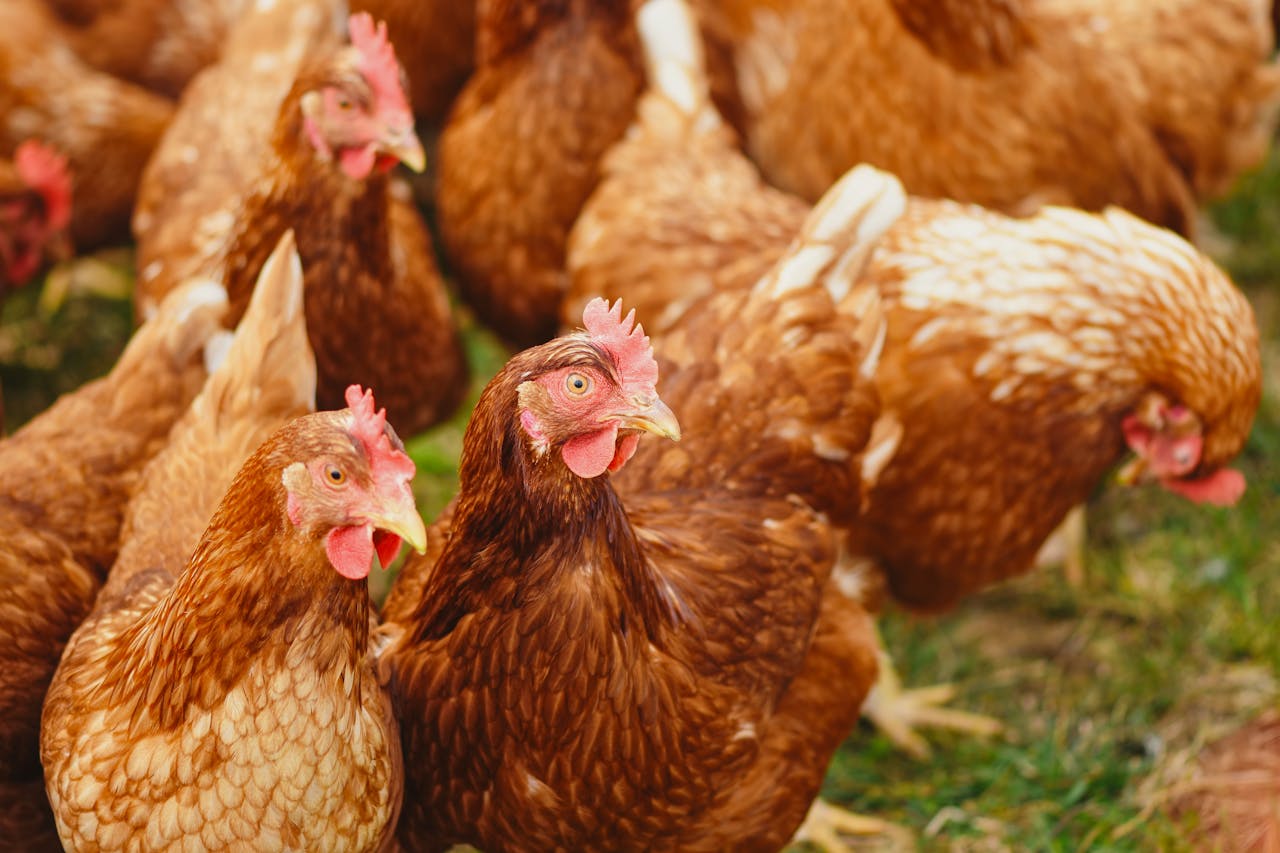Skip to content


1. Research and Planning
- Market Analysis: Understand the demand for poultry products (eggs, meat, or both) in your area.
- Farm Type: Decide if you want to raise layers (for eggs), broilers (for meat), or both.
- Scale of Operation: Determine the size of your farm based on available resources and budget.
2. Develop a Business Plan
- Budget: Calculate startup and operating costs, including land, equipment, feed, and labor.
- Revenue: Estimate potential earnings from selling poultry products.
- Goals: Set clear short-term and long-term objectives.
3. Choose a Suitable Location
- Accessibility: Ensure easy access for transportation and supplies.
- Ventilation: Choose a well-ventilated area to keep birds healthy.
- Zoning Regulations: Verify compliance with local laws and permits.
4. Set Up Housing
- Design: Build or buy poultry houses with adequate space per bird (e.g., 1.5-2 sq. ft. per bird for layers).
- Ventilation and Light: Install proper ventilation and lighting systems.
- Safety: Protect against predators and harsh weather conditions.
5. Procure Equipment
- Feeding and watering systems (e.g., troughs, feeders, drinkers).
- Egg trays and nesting boxes for layers.
- Heating systems (brooders) for chicks.
6. Buy Quality Chicks
- Source healthy chicks from reputable hatcheries.
- Ensure they are vaccinated and have a strong disease resistance.
7. Feed and Nutrition
- Use high-quality feed with balanced nutrients (starter feed for chicks, grower feed, and layer/broiler feed).
- Provide clean and adequate water supply.
- Monitor feeding schedules to optimize growth and production.
8. Health and Hygiene
- Vaccination: Follow a vaccination schedule to prevent diseases.
- Biosecurity: Restrict farm access to prevent contamination.
- Regular Cleaning: Keep the poultry house clean to reduce the risk of infections.
9. Hire and Train Staff
- Employ skilled workers for daily operations.
- Train them on feeding, handling, and disease management.
10. Marketing and Sales
- Identify potential buyers (retailers, restaurants, local markets).
- Use social media, local ads, and word-of-mouth to promote your products.
- Offer competitive prices to attract customers.
11. Maintain Records
- Track expenses, income, and bird health.
- Analyze performance to make improvements.
12. Stay Compliant
- Obtain necessary permits and licenses.
- Follow environmental and animal welfare regulations.
Tips for Success
- Start small and expand gradually as you gain experience.
- Build good relationships with suppliers and buyers.
- Continuously educate yourself on poultry farming techniques and market trends.
